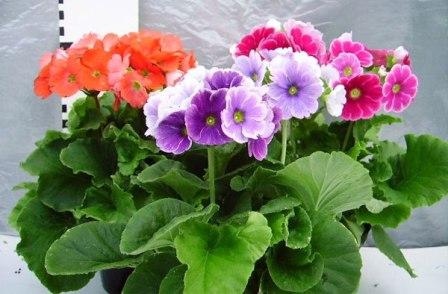 It should be noted that many people wish to have such luxury in their land, cottage, garden or front garden, as well as decorate a house or a balcony with these beautiful flowers. However, the fear that they will not be able to grow such a divine beauty stops it. Meanwhile, this perennial plant is quite unpretentious, the only difficulty, and even that is overcome, is to grow its seedlings from seeds. Breeding primrose, seed growing at home, based on the knowledge and use of the experience of gardeners, it is not at all a risky activity and not a waste of time. The reward will be a real paradise in your world - salvation from life's problems and depression.
It should be noted that many people wish to have such luxury in their land, cottage, garden or front garden, as well as decorate a house or a balcony with these beautiful flowers. However, the fear that they will not be able to grow such a divine beauty stops it. Meanwhile, this perennial plant is quite unpretentious, the only difficulty, and even that is overcome, is to grow its seedlings from seeds. Breeding primrose, seed growing at home, based on the knowledge and use of the experience of gardeners, it is not at all a risky activity and not a waste of time. The reward will be a real paradise in your world - salvation from life's problems and depression.
Acquaintance with a flower
If you once became interested in this flower, then your desire to learn everything about it will become irresistible, and when you find out, you will want to have as many varieties of it as possible. And there are simply a fantastic number of primrose species, 550 of only its various varietal species, not counting recent hybrids. In addition, seeds collected on their own and planted the next year no longer retain the characteristics of the species, and a completely new variety of primrose can grow, unfamiliar, but always beautiful.
To make it somehow easier to navigate this sea of beauty and colors, the breeders have adopted a system of sections consisting of 23 official names of the primrose species. Despite such wealth, no more than 200 species are mainly cultivated in our latitudes, and popular distribution has an even greater restriction on the most popular and easiest to breed.

The leaf rosette of a primrose flower itself looks very aesthetically pleasing, growing from seeds at home (video), which we will describe in detail. Even if inflorescences are still absent, a leaf rosette can already become a decoration of a flower bed, and when these bright and diverse lights appear, there is no limit to delight, especially if you realize that you have grown such a luxury with your own hands.
The most popular among summer residents and gardeners are tall primroses, in which a peduncle with a round hat of bright flowers appears from a leaf outlet. The colors of this species are simply unlimited, for a flower garden it is better to choose a primrose as much as possible in a wide variety of shades. The contrast between the colors of the center and the petals gives brightness to the inflorescences, it is always a flash of color created by the most talented artist - nature. You should know when to plant primrose seeds for seedlings.
After you grow seedlings and later receive a flower garden of fantastic beauty, you can also try on the role of a breeder, having your own primrose for the next year. There is nothing complicated in such work, just transfer the pollen from one flower to another with a brush, and in the fall, correctly collect the seeds and observe the storage conditions.
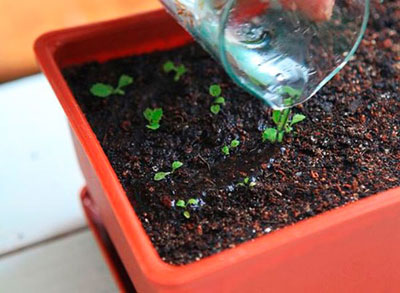
Combining the types of primrose on a peduncle and without it, you can not only create a beautiful bright carpet on your own lawn, but also give it volume. When creating a floral arrangement of primroses in your imagination, be sure to include in it a polyanthus primrose, which is a hybrid created on the basis of a high primrose. Primrose, growing from seeds at home (photo) which is not something super complicated, will more than thank you for your efforts with your royal look.
Preparing seeds
If you purchased seeds in a store, then disinfection against fungal diseases can not be carried out, in contrast to the case when you purchased seeds from those who already plant primrose and share seeds with friends and acquaintances.
However, it should be borne in mind that the fact that primrose seeds spoil very quickly, and paying attention to the date on the envelope with them, is simply necessary so as not to throw out money and not part with the hope of growing primrose on your own.
So, seeds collected independently or acquired from hands, it is necessary to lower in a 1% solution of potassium permanganate for 15 to 20 minutes. Since the seeds are very small, it is inconvenient to do this procedure in a fabric bag, it is better to just pour the seeds into a pot with potassium permanganate, and then pour the solution along with the seeds into a tea sieve with a cotton pad laid on it. Then in the same way we wash them in clean water and leave to dry directly on a cotton pad.
Recommended:Alyssum: growing from seeds when to plant
The difficulty in working with primrose, growing from seeds at home (how and when to sow) is not limited only to the small size of the seeds and the ability to deteriorate quickly even with small deviations from storage conditions. Another difficulty is the long term germination of seeds, in order to affect this process in terms of acceleration, the seeds are subjected to stratification. However, there are varieties of primrose that do not need this procedure and delight gardeners with friendly shoots, subject to the conditions of their quality.
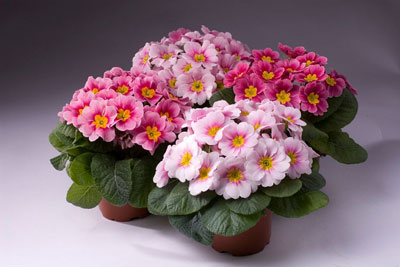
Stratification, keeping the seeds at low temperatures, should be carried out either by identifying the container with the seeds planted in the cold for up to two days, or by placing them on cotton pads, placed in a bag, in a freezer with a temperature not lower than -10 C, or subject the seeds to thermal shock once a day. Such a thermal shock can be provided by a sharp change in temperature, from 1-3 C to room temperature, moving the seeds at regular intervals. Primrose, growing from seeds at home and stratification, if all the conditions are met, gives just a forest of shoots, surprisingly even experienced gardeners.
Soil preparation
It is better to purchase peat tablets for planting primrose seeds, however, it is quite possible to save on this expensive pleasure by preparing the soil yourself. In advance you should purchase containers for seedlingsAny plastic option will do.
Ready soil, or a mixture of rotted compost and leafy earth, is mixed with perlite and vermulite. These two loosening additives to the soil, as well as lowering its acidity, will provide oxygen access to the roots and their even distribution in the soil, which will most positively affect the development of the plant.
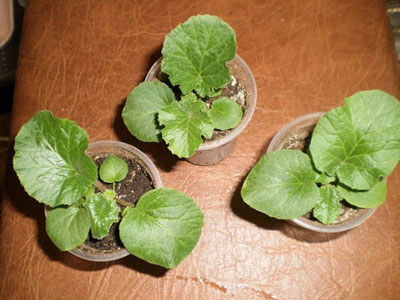
There are other options for additives, for example moss - sphagnum, in an amount of 20 to 50% of the amount of soil, and the content of this component increases depending on the decrease in seed size of this variety of primrose. There are also simplified methods of soil preparation, each gardener has his own secrets in this matter, but regular drainage is mandatory.
In addition, in order to prepare the correct composition of the soil, it should also be decontaminated by steaming, or by pouring it with boiling water. How to do this specifically, each gardener decides in his own way, sharing information about primrose, growing from seeds at home on the forum.
Sowing seeds
As already mentioned, the primrose is also called primrose, it refers to the flowers that are one of the first to please us after winter. Seedlings are also sown very early on seedlings, usually February - March, but there are gardeners who have sown plant seeds since January. However, for such an early sowing, it is necessary to prepare artificial lighting, since this month the daylight hours are completely insufficient for the proper development of seedlings.
The soil before sowing the seeds is slightly moistened with the drip method, in order to provide a moist upper layer without over-moistening in depth, a small layer of vermulite can be laid on top. Primrose seeds, because of their very small size, are sown with great care, observing their uniform distribution.
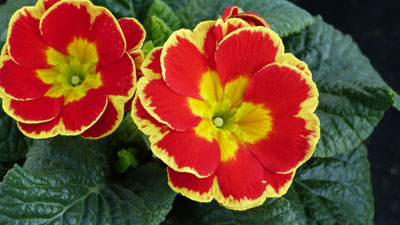
And again we can say that in this matter each experienced gardener has his own secrets, so many are sown on a layer of snow previously laid in a container, or use special tweezers for eyebrows, laying each seed in its own specific place in the container. Primrose, grown from seeds at home on the soil, properly prepared, sprouts 3-4 weeks, however, these periods can be significantly delayed, so you should not be upset, but just need to be patient.
Recommended: How and when to plant petunia for seedlings in 2016
After planting the seeds, the container is covered with a film and placed in a warm place with a temperature of up to 16 - 18 C, after the seeds hatch, the film is removed and the soil is regularly moistened in the container.
Pick
A feature of primrose seeds is that it is desirable to dive them 2 to 3 times, you can start without waiting for the appearance of these leaves. The first pick is carried out in the phase of cotyledon leaves, carefully spreading the seedlings on the prepared surface with improvised means.
In the soil, it is necessary to prepare the holes so that the root system fits freely, take tender plants with tweezers, do not deepen the cuttings, immediately need a little watering, which can be done using a simple syringe, having previously removed the needle from it.
The ear-primrose, grown from seeds at home, is also planted in the same way. This hybrid of primrose omitted is especially beautiful with its contrast of a white or yellow center and colorful bright petals.
Primrose seedlings are sown in the ground at the beginning of June, after it has taken root in a new place, it is necessary to fertilize plants with complex fertilizers every 7 days, and after flowering they stop feeding.

